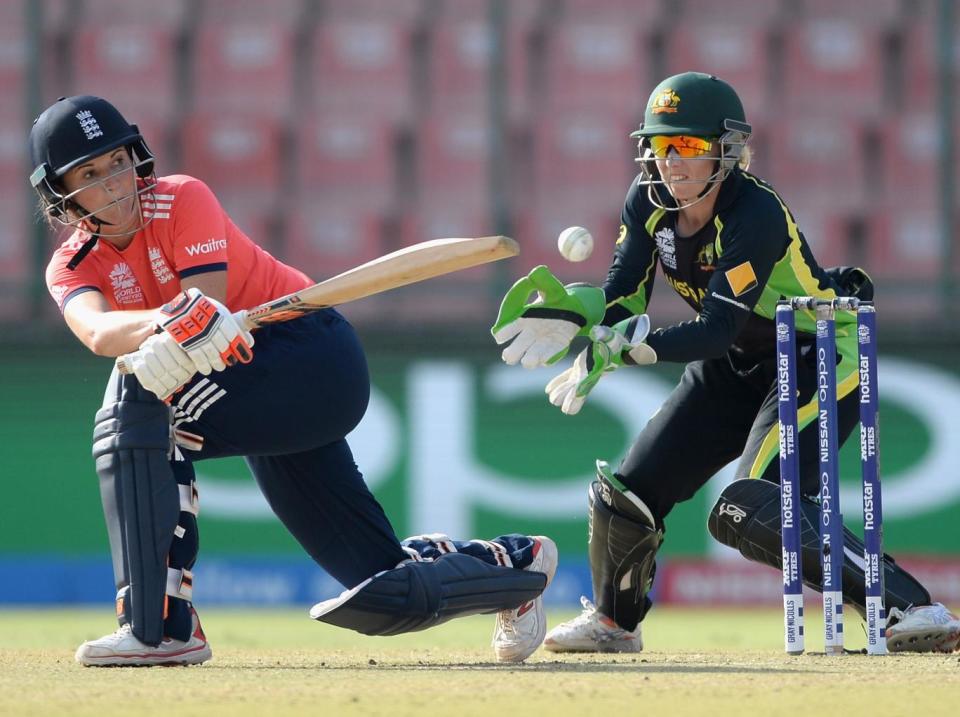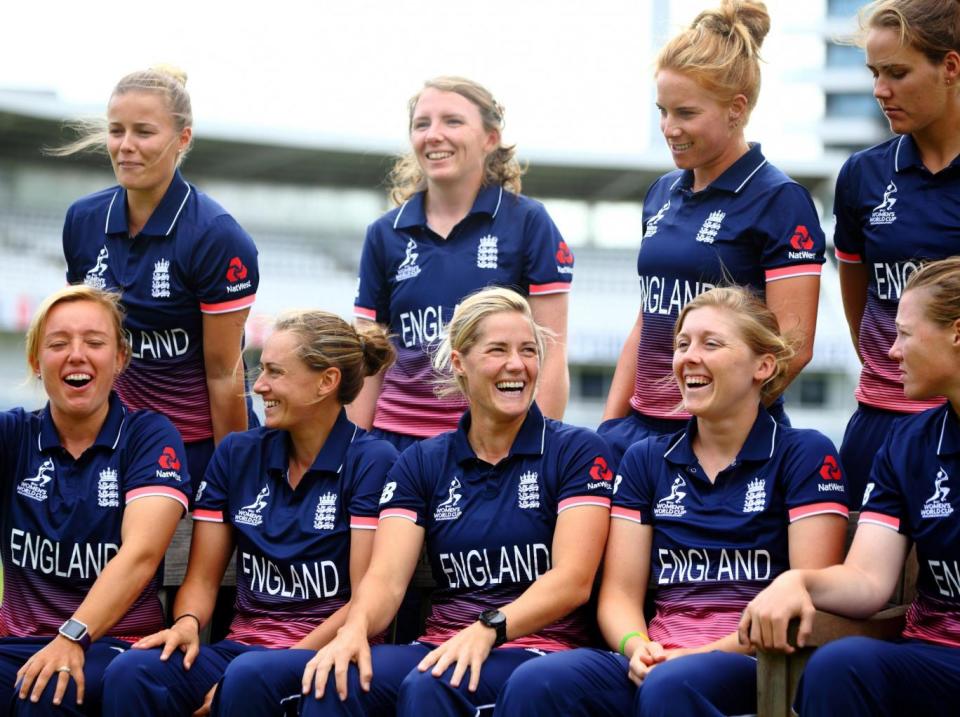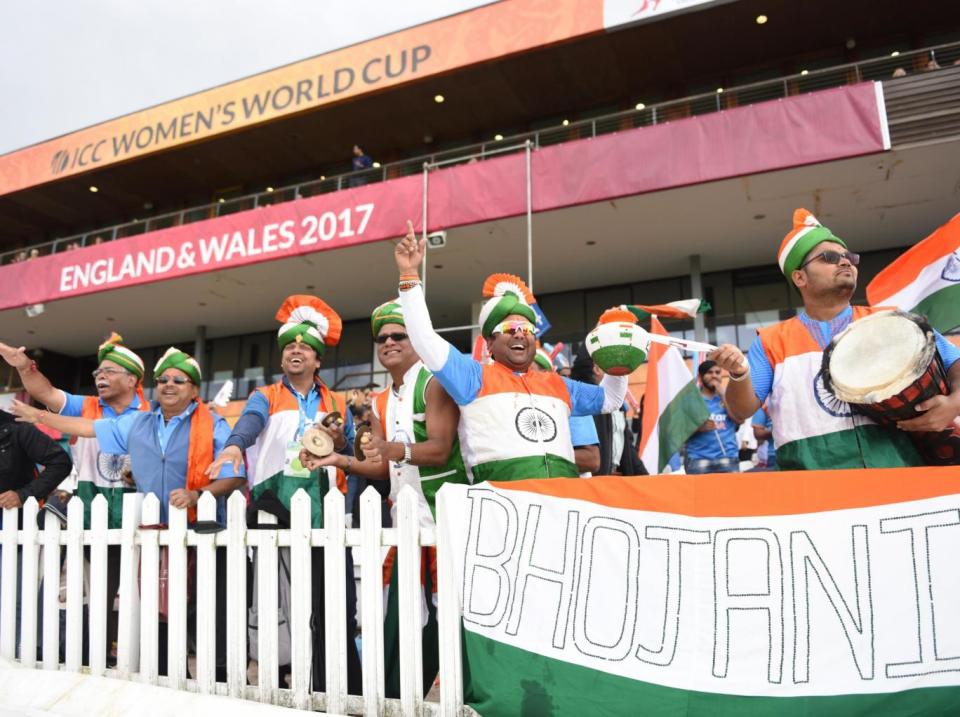Women's World Cup: England hope their improved fitness could will key in Lord's final against India

“Oh my god I’m here. I looked at all those seats and thought ‘I can’t believe they’re going to be full’. I can’t do it.”
For a sense of the enormity of Sunday’s game, consider how Alex Hartley, England’s left-arm spinner, reacted to seeing Lord’s on Thursday, as England began to prepare for the Women’s World Cup final. “When I think about it I get sweaty palms. But it’s why I play cricket. If I bottle it now then I’d never forgive myself.”
Such are the pressures of playing in a final at Lord’s, amplified by the added burden - or opportunity, depending on your perspective - of being part of the first ever woman’s match to fill the hallowed ground.
The occasion has been generations in the making, as will be emphasised on Sunday by 5,000 plastic bats being handed out bearing the signature of Rachael Heyhoe-Flint. The great pioneer of women’s cricket she fought to create the inaugural World Cup in 1973, to get Lord’s to agree to staging women’s matches, form 1976 and then, in 1998, to admit female members.
But for England’s team, the road to Lord’s began 16 months ago, on a sweltering day in Delhi. What should have been a cruise - 45 runs from 42 balls with nine wickets in hand - descended into an ignominious semi-final defeat. England were not so much beaten by Australia as by themselves. “We're not fit enough,” Mark Robinson declared in the ensuing press conference.
What followed was a bout of ruthlessness of the ilk never seen before in England women’s cricket. Charlotte Edwards, their long-time captain and batting totem for two decades, was mercilessly pushed into retirement; so was Lydia Greenway, another batting stalwart.

The creeping stasis - England had not selected any international debutants in the previous two years since turning professional - gave way to embracing new talent, including Hartley, and empowering those who had existed in Edwards’ shadow. And Robinson resolved that, as professional cricketers, the team must train like them.
Doubtless Robinson was thinking of Tammy Beaumont, who was Edwards’ opening partner during the WT20 in India. “I was flagging by the 14th or 15th overs,” she recalls. “I really struggled with the heat.”
Beaumont was emblematic of an England team not fit enough to maximise their talents. When they returned from India, they embraced their failings. “We weren't going to let anyone coast, we were going to pull up on people to make sure they were pushing themselves and try and find almost new limits to what we could do as a team physically, and mentally too,” she remembers. “It’s just being a bit more honest with yourself, really pushing yourself. We had some really horrible fitness sessions.” A trip to Bradgate Park, to run with ropes up hills, was “just disgusting.”

Yet by mid-summer last year Beaumont was a cricketer transformed. After no half-centuries in 16 previous ODI innings, she promptly made 70, 104 and 168* against Pakistan. In the last game, she was on the field for all 100 overs of the innings. In this game, the ECB’s medical team calculated, Beaumont ran 19.5km, including 150 sprints, while batting: an extraordinary feat for one of the players previously identified as lacking the requisite fitness.
Such gruelling fitness sessions have since become the new normal for England’s women. As England prepared for their first home World Cup in 24 years, they were accompanied by an attention to detail unprecedented in the women’s game: they are not just the first generation of professionals, but the first great beneficiaries of the meticulous attention-to-detail of the boffins at the ECB's high-performance centre in Loughborough.
“We've worked on really intricate things like getting quicker at turning between the wickets and getting lower, and the way we move in the field to move better,” Beaumont explains. “We even worked on run-outs to make sure that we were all diving properly. Some of us wouldn't dive in, we'd just run our bat in.”

In a tournament in which the margins have been so minute - England beat Australia by three runs and then South Africa by two wickets in Tuesday’s pulsating semi-finals - such precision might well have been decisive. “There's been a few close run-outs where we've just been over the line… The little stops on the boundary. Its made a massive difference.”
But perhaps not as great a difference as Beaumont’s 387 runs, more than any of her teammates. A player who had once seemed confused of her role, being shunted up and down the order like a yo-yo, has been liberated, thrillingly, by Robinson’s faith.
“He obviously saw something in what I was doing as a batter and gave me that opportunity,” Beaumont says. “He's come in with quite a clear, simple gameplan. If I'm someone who can play the reverse sweep, why not play it and be as committed as you can? Let us make the decisions, and back our ability, and review and learn from it every time.
“I had a lot of options before but I'd almost play them in the wrong order. Now its a case of I know what I'm trying to do early on, know what I'm trying to do against different bowlers and different pitches and make sure that I adapt. Having that tough start almost makes me a bit more ruthless now.”

Beaumont describes her metamorphosis as a “coming of age.” The same feels true of the women’s game itself. Don’t just ask those at Lord’s on Sunday, or the 50 million who have watched the tournament on TV so far. Ask Beaumont’s mum.
During one of England’s games at Bristol, her mum saw a young girl wearing a shirt with Beaumont’s name on her back. “She actually cried seeing that, thinking that someone had decided to be like me.”

 Yahoo Sport
Yahoo Sport 





































